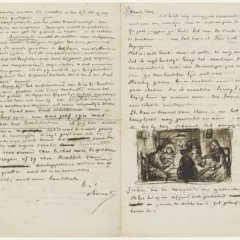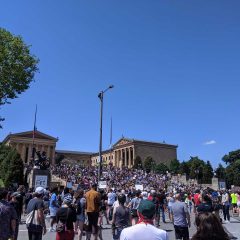Here’s a copy of Roberta’s piece in this week’s Philadelphia Weekly, with some added images.
by Roberta Fallon
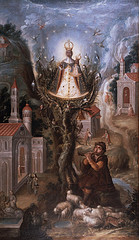
Virgen de Aranzazu, by Cristóbal de Villalpando
It’s not often you can use the word splendid, but splendid—brilliant, radiant, showy and grand—is what “Tesoros” is.
Six years in the planning and 250 objects strong, “Tesoros: The Arts in Latin America, 1492-1820” at the Philadelphia Museum of Art is a celebration of the mix of native, African and European cultures that wove themselves together in colonial Latin America. You might think that sounds like a dry history lesson, but it’s not. The show sparkles with gold and silver and virtuoso paintings and statues. And the works, forged in the artisan studios where European aesthetics (Catholicism and royalty) came together with indigenous practices (magic realism, symbolism), are truly marvelous hybrids.
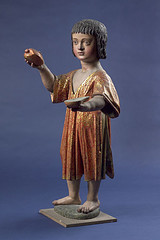
Christ Child of Huanca
The 17th-century Peruvian statue Christ Child of Huanca, for example, shows a child wearing native clothing and holding a human heart in one hand and an avocado in the other. This theme of the complete inculcation of one world with the other comes early in the show and is repeated throughout.
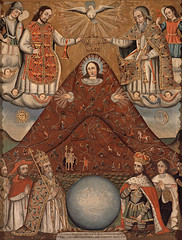
The Virgin Mary and the Rich Mountain of Potosi, 68 7/8 x 53 1/3″
Later works like the Bolivian 18th-century painting Virgin Mary and the Rich Mountain of Potosi add touches of what we today might call magic realism. This painting shows the virgin and mountain as one, with a mysterious crystal ball emanating a ghostly mountain scene in the foreground. Baroque and ornate but influenced by native imagination, beliefs and practices, it’s one of many exciting blends in this show.
This isn’t a show about colonialism or about the overthrow of the Spanish or Portuguese by the native populations. That happened around the end of the period covered by this show, and bringing in those revolutionary issues and objects would’ve created a different mood. Instead this exhibit celebrates the hybridization of cultures that arises when different worlds come together.
The comprehensive and weighty catalog for the show (650 pages; 500 color and 250 black-and-white illustrations) includes discussion about the colonial era and its aesthetics. War and revolution enter at the end in detailed chronology, leading you through important colonial conquests and revolutions.
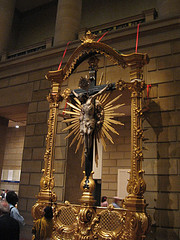
The Crucifix from Olindo
Side stories abound in a show this large. At the press preview the PMA’s Joseph J. Rishel—who co-organized the exhibition with Suzanne Stratton-Pruitt—explained how the massive show containing both secular and religious objects came together, and how along the way one object—the large, free-standing gilt Crucifix from Olindo, Brazil—was found to be in need of restoration. So they raised money to conserve it, restored the object, and it’s now installed—an artifact of amazing grace and power—in the Great Stair Hall of the PMA.
When globalization is on many people’s minds, and when many cultures feel threatened by loss of cultural identity, this show feels right on time.
“Tesoros: The Arts in Latin America, 1492-1820”
Through Dec. 31. Philadelphia Museum of Art, 26th St. and the Pkwy. 215.763.8100.



